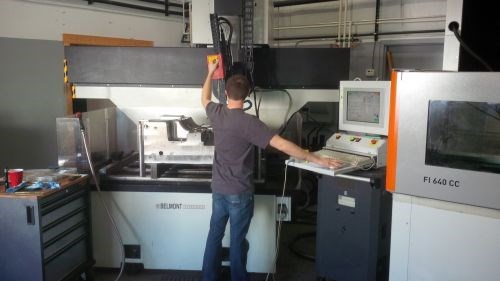Big Opportunities in Moldmaking
Companies appearing in two recent articles tout large-part machining capability as a significant competitive advantage.

Brian Bernt, co-owner of Extreme Wire EDM, credits this massive Belmont BT155 EDM drill from Belmont Equipment and Technologies for bringing in much of the new work that has enabled the company to expand into a new facility that’s four times larger than its previous location. Learn more here.
True to its name, Extreme Wire EDM takes on the tough stuff—wire-cutting work that shops with broader capabilities can’t do on their own, whether because they lack the capacity, the expertise or the right equipment. Judging by the company’s recent growth (detailed in this article), such work is in particular demand in the mold industry, which accounts for nearly 90 percent of the shop’s business. When I asked for more specifics on what these customers are looking for, co-owner Brian Bernt’s response was immediate: large-part machining.
That makes sense to me, given that larger components are more difficult (and expensive) to ship. That makes this work more difficult (and expensive) to contract to offshore manufacturers. Although I haven’t seen any hard data recently, my conversation with Bernt is among the many pieces of anecdotal evidence I’ve come across suggesting that increasing numbers of shops see opportunities in larger molds.
One moldmaker that’s been ahead of the pack in this respect is MSI Mold Builders, which has always considered large-part machining capability to be a competitive advantage. Recently, the company doubled-down on this core capacity by adding 47,000 square feet of manufacturing space to house a massive moving-column, five-axis OMV Formula HMC from Parpas America with about 20 feet of longitudinal travel and 12 feet of vertical travel. Read this article to learn more.
For more about Extreme Wire EDM, check out this article, which details how expertise in drilling start holes makes the downstream wire-cutting process both faster and more precise.





.jpg;maxWidth=300;quality=90)







